Safely scrape paint off plaster walls? (Danged calcimine!)
cnvh
18 years ago
Related Stories

REMODELING GUIDESOriginal Home Details: What to Keep, What to Cast Off
Renovate an older home without regrets with this insight on the details worth preserving
Full Story
PAINTINGHow to Hire a Painter to Do Your Interiors
Here’s what to know about hiring a painting contractor and what to expect during the job
Full Story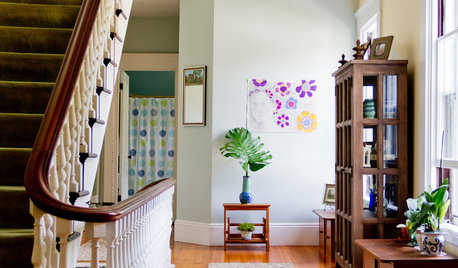
HEALTHY HOMEGet the Lead Out: Lead Safety at Home
Keep your family safe by properly testing for and dealing with lead in old painted surfaces, water and soil
Full Story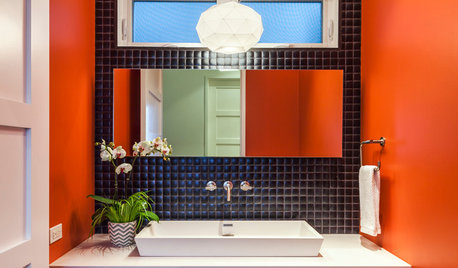
BATHROOM DESIGN7 Striking Paint Colors for Your Powder Room
Whether you opt for a little or a lot, see why the petite bathroom is the perfect place for a fun hue
Full Story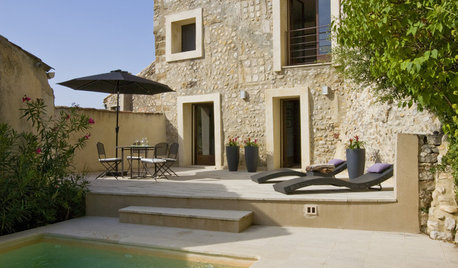
MODERN HOMESHouzz Tour: 800-Year-Old Walls, Modern Interiors in Provence
Old architecture and new additions mix beautifully in a luxurious renovated vacation home
Full Story
MOST POPULARHeads-Up Hues: 10 Bold Ceiling Colors
Visually raise or lower a ceiling, or just add an eyeful of interest, with paint from splashy to soothing
Full Story
HOME OFFICESQuiet, Please! How to Cut Noise Pollution at Home
Leaf blowers, trucks or noisy neighbors driving you berserk? These sound-reduction strategies can help you hush things up
Full Story
DECORATING GUIDES11 Tricks to Make a Ceiling Look Higher
More visual height is no stretch when you pick the right furniture, paint and lighting
Full Story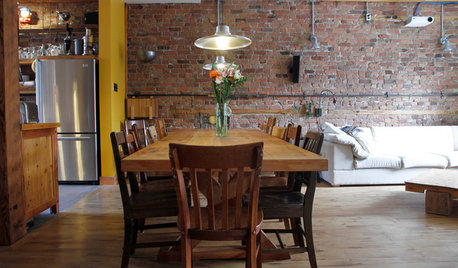
ECLECTIC HOMESMy Houzz: Ecofriendly and Salvaged Style in a Montreal Triplex
Repurposed materials, graywater reuse, and no-VOC paints make for a resourcefully earth-friendly home in Quebec
Full Story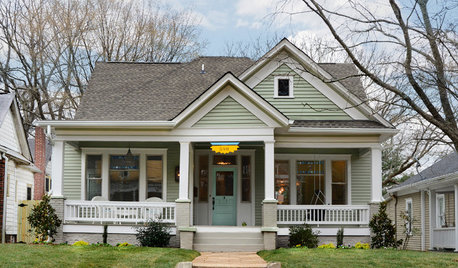
HOUZZ TOURSHouzz Tour: Lovingly Resurrecting a Historic Queen Anne
Dedication and a keen eye turn a neglected eyesore into the jewel of its Atlanta neighborhood
Full StoryMore Discussions










brickeyee
brickeyee
Related Professionals
Martinsburg Kitchen & Bathroom Designers · Mount Prospect Kitchen & Bathroom Designers · Pike Creek Valley Kitchen & Bathroom Designers · St. Louis Kitchen & Bathroom Designers · Channahon Kitchen & Bathroom Remodelers · Oceanside Kitchen & Bathroom Remodelers · San Juan Capistrano Kitchen & Bathroom Remodelers · Tempe Kitchen & Bathroom Remodelers · Tulsa Kitchen & Bathroom Remodelers · Mountain Top Kitchen & Bathroom Remodelers · Brushy Creek Architects & Building Designers · Five Corners Architects & Building Designers · Hockessin Architects & Building Designers · Parkway Architects & Building Designers · Yeadon Architects & Building Designershousekeeping
Christopher Nelson Wallcovering and Painting
katzblood
brickeyee
boudroe
SaintPFLA
brickeyee
allison1888
brickeyee
Christopher Nelson Wallcovering and Painting
HU-827689736
StarCraft Custom Builders